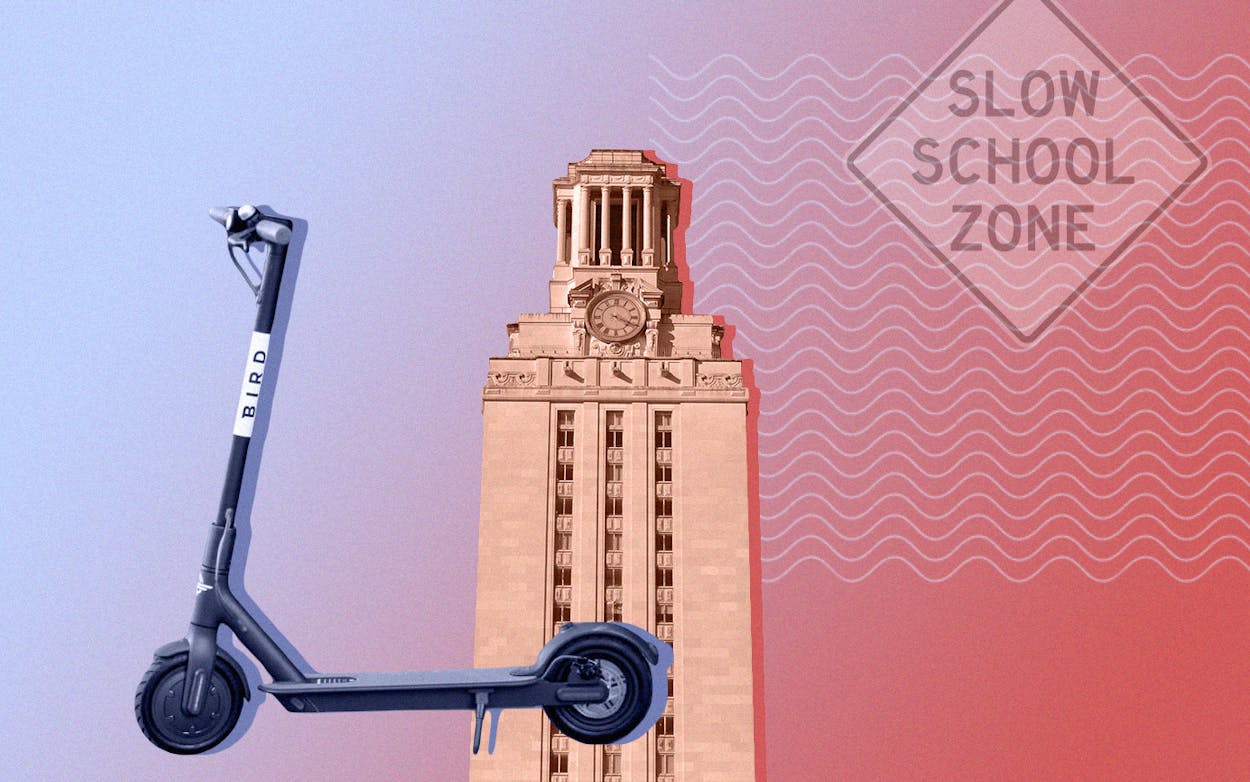On Monday, the University of Texas at Austin announced a new speed limit for the dockless scooters that have become ubiquitous not just on its campus but throughout central Austin, Dallas, and San Antonio, as well as at other colleges like Texas Tech and Abilene Christian. Unlike conventional speed limits, it won’t take a cop with a radar gun to ensure riders don’t break the rule. Instead, the 8-mph limit will be enforced using geofencing technology, which will throttle down a scooter’s top speed (typically 15 to 17 mph) whenever it’s on the UT campus.
The limit, which goes into effect March 26, appears to be the first implementation of geofencing to regulate scooter speed anywhere in the country. (San Diego approved similar limits earlier this month, but those don’t go into effect until June.) Cities and other institutions—mostly universities—are still trying to figure out the right way to manage these vehicles when they get dropped off within their territories, often without much in the way of a discussion of the rules.
When the Austin City Council approved scooter regulations last May, it included a requirement that the devices be equipped with geofencing technology to alert users when they parked in an off-limits area. In Denver, that same technology was implemented last year. But using geofencing to cap speed is a new frontier that we’re likely to see much more of—for scooters, driverless cars, and other modes of personal transportation. Earlier this month, Volvo announced all its new vehicles would be limited to 112 mph—along with a plan to test geofencing that could automatically slow cars as they drive near schools and hospitals.
Technology like this still requires more testing. Problems must be solved regarding how hard cars would brake, for example, when they enter geofenced zones and whether that could present safety risks to cars traveling behind them. Los Angeles stopped considering a form of geofencing that would disable scooters when they enter scooter-free zones after the city realized that it couldn’t answer questions about what might happen if the motors shut off in the midst of traffic or while traveling down hills.
Still, those challenges likely can, and probably will, be solved. Meanwhile, UT’s implementation of a geofencing-enforced speed limit is a sign that traffic law enforcement is rapidly evolving from “no cop, no stop” to systems in which the vehicle is the cop.
- More About:
- Austin








